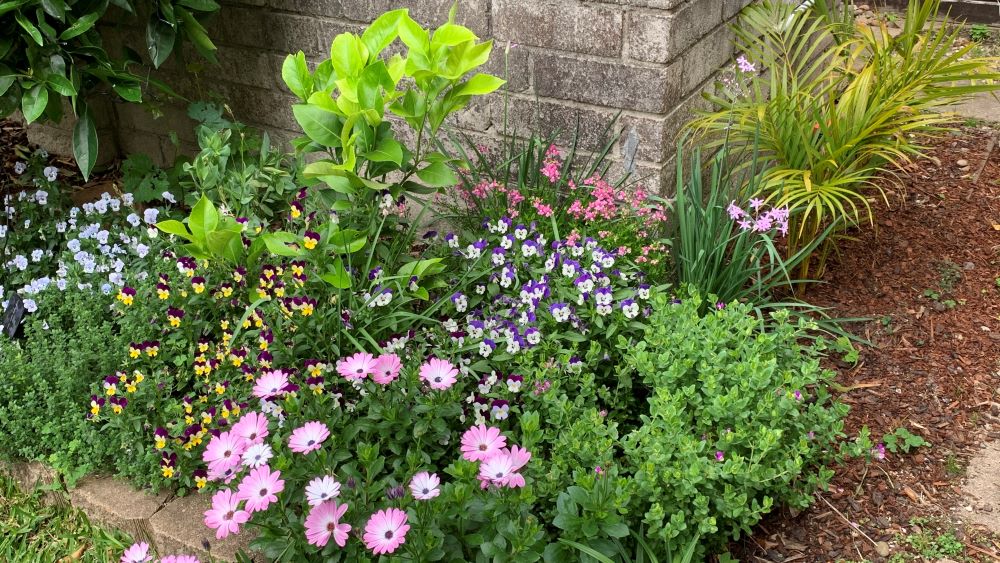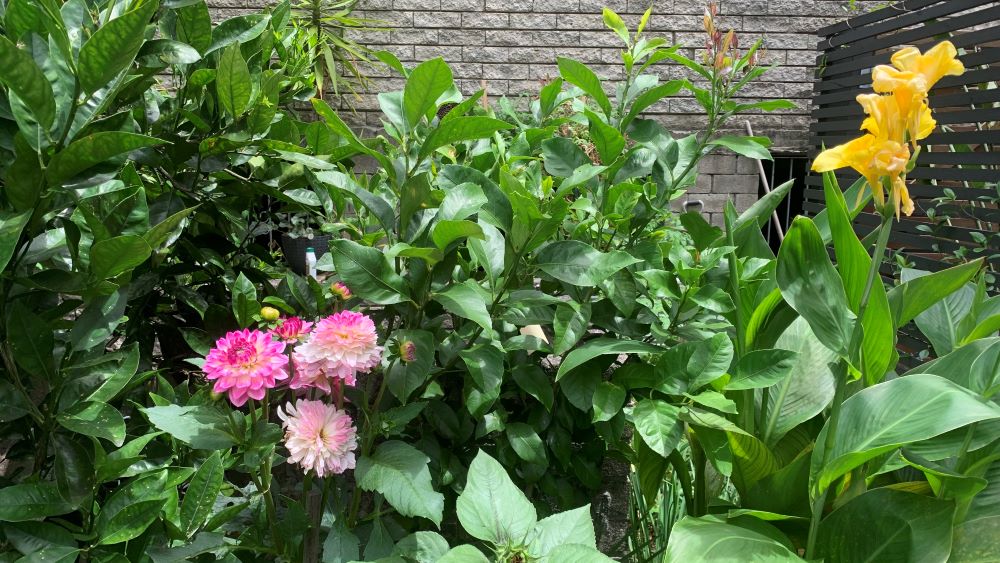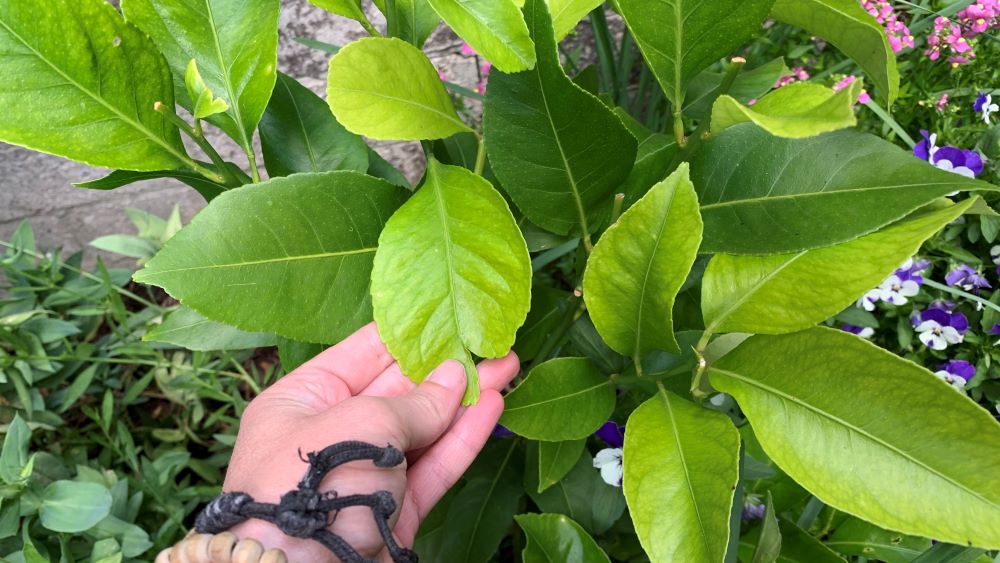Lemon trees can be protected from the cold of winter with mulch, pruning and a dose of fertilizer in fall. Preparing the soil and top dressing the tree in spring is a great way to keep the root system healthy and help the tree survive the winter.
This article will explore the top 5 tips for helping your lemon tree to survive winter through pruning, mulch, fertilizer and watering.

Top lemon tree winter care tips
Here are my top 6 tips to help a lemon tree to grow, develop and survive in winter.
1. Winter Pruning for lemon trees
Pruning the lemon tree lightly before winter by removing any damaged branches and leaves will keep the tree looking great. Prune the tree in fall before the very cold weather hits in winter.
Remove stems that have crossed over and are rubbing against each other, any stems that are damaged and any that are growing beyond the shape of the tree.

Make sure you don’t remove too much of the canopy as some extra leaves can help to protect the tree from any mild frosts. Only remove branches that are broken, damaged, touching the ground or rubbing against other branches.

2. Top dressing lemon trees for the winter
Top dressing lemon trees in fall to prepare them for winter is a great way to protect and feed their delicate feeder roots near the surface. Top dressing adds organic matter, nutrients and also acts as a mulch to protect the roots and keep winter weeds away.
To top dress lemon trees use a rake to move the mulch back from the soil. Top dress with a mix of aged cow manure and compost. You can mix these together in a wheelbarrow or bucket and then place it around the roots. Gently move it about on top of the soil to around 1-2 inches thick.
Top it with 2 inches of mulch and water it in well. Always water after adding mulch to help to settle it all in, start to wash nutrients down to the roots and hold the mulch in place.
For more on top dressing citrus trees, check out my previous article here: How to top dress citrus trees | The Easy Way

3. Mulching lemon trees in the winter
Mulch is important to protect the roots of lemon trees of winter. I have always found the best results when I have added a 2 inch layer of mulch on top of the soil. You can use straw mulch to create a blanket which protects the roots, soil, soil bacteria and worms from frosts.
Other great mulch options include bark mulch, pea straw, lucerne and sugar cane mulch. Bark mulch works well because it can last up to 6 months. Lighter mulches like pea straw or sugar cane will break down quicker and you will need to top them up at the end of winter.
Keep the mulch around 2 inches away form the base of the tree to allow water to drain away and make sure it does not sit against the trunk and cause rot or encourage pests.
While some gardeners recommend removing mulch in winter to allow the soil to heat up, I have always found better results by leaving mulch on the soil to protect the roots and worms.

4. Fertilizing lemon trees in the winter
Lemon trees will not need fertilizer in the middle of winter as they will be slowing their growth. What is important is to prepare them for winter by adding a small amount of fertilizer at the beginning of fall and at the very start of winter.
Use a small amount of pelleted chicken manure which will slowly release over around 3 months. You can also give it liquid fertilizer mixed with seaweed solution. Choose a balanced fertilizer or one made for fruit trees. The nutrients will help strengthen the roots, stems and leaves to survive winter and the seaweed solution will help to support soil bacteria for healthy soil.

5. Watering lemon trees in the winter
Lemon trees can usually survive the winter without additional water if you are getting regular rainfall. When the weather is cooler and you have protected the soil with mulch it will hold water for longer than in summer or spring.
If winters are dry, check the soil with your finger 2 inches below the surface. If the soil is dry, give it a deep watering around once per month. Water across the root system in the morning to give the plant to absorb the water before it turns too cold at night.
6. Protecting a lemon tree through heavy frost or snow
If you live in an area that gets heavy frosts or even light snow you will need to protect your lemon trees. For areas that get frosts you can build a protective barrier to keep the frost off the leaves. Use a wire cage around the tree and cover the top with a clear plastic cover.
Cover the outer sides with shade cloth to allow air movement and you will have a great protective barrier for your fruit tree.
For areas that get snow the best option will be to bring the tree into an area that is fully protected. Move potted lemon trees into a greenhouse or indoors to keep them away from harsh winter weather. Lemon trees will not survive a very cold winter without protection.
Lemon tree winter care | Summary
Lemon trees will need help to survive and thrive in winter. Prune away any damaged branches, top dress with aged cow manure and compost and mulch them well. This will set them up with the best chance to develop their roots ready to burst to life in spring.
You shouldn’t expect much action from your lemon tree in winter as they slow their growth but if you have set them up right, they will grow rapidly when the weather starts to warm in spring.
Citrus trees make a great feature in a pot and this is the best option if you live in an area that gets harsh frosts or snow over winter. You will need to fully protect your lemon tree by placing it in a protected greenhouse or indoors over the winter.
Lemon trees are a bright green, fantastic feature tree to add to your garden. Happy growing.
I am an accredited practicing dietitian, experienced gardener and a dedicated cook. I love writing and sharing my experience so you can learn from my successes and mistakes.
